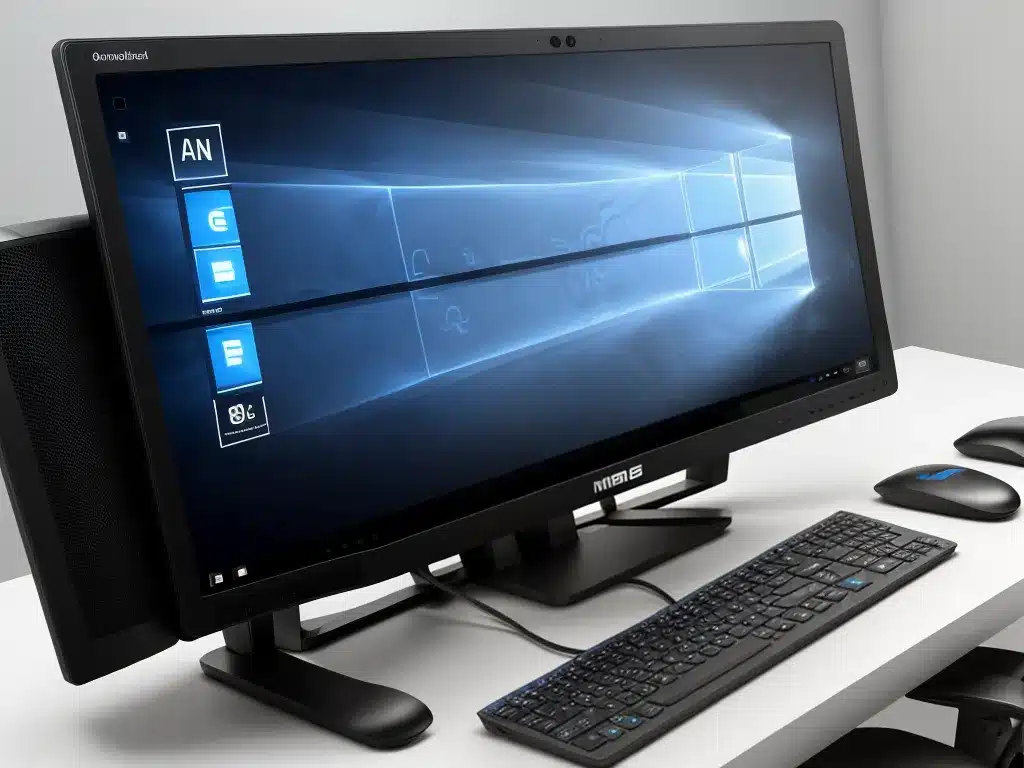
Upgrading an all-in-one (AIO) PC can be challenging but is possible depending on the make and model. Here is an in-depth look at upgrading AIO PCs.
What is an All-In-One PC?
An AIO PC is a type of desktop computer where the monitor and internal components are built into a single unit. The monitor and computer case are integrated and not separate.
AIO PCs are designed to save space since everything is contained in one compact unit. They also have a sleek, minimalist aesthetic since all the wires and separate computer tower are hidden within the display.
Pros and Cons of AIO PCs
Pros:
- Compact, space-saving design
- Stylish, minimalist look
- Simple plug-and-play setup
Cons:
- Limited upgradeability
- Repairs often require entire unit to be shipped
- Higher cost compared to building a separate desktop
Upgrading AIO PC Components
Upgrading internal components in an AIO PC is constrained by the all-in-one design. Here are some key components and upgrade considerations:
CPU
- Most AIO PCs have the CPU integrated onto the motherboard, making processor upgrades impossible.
- For AIO models where the CPU is removable, upgrades may be limited to the same socket type.
RAM
- Adding more RAM is one of the easiest upgrades on most AIO PCs.
- Accessing the RAM slots requires removing the rear cover.
- RAM upgrades are limited by the number of memory slots and maximum supported RAM.
Storage
- Storage can be upgraded on most AIO PCs by adding a larger hard drive or SSD.
- M.2 and 2.5″ SSDs are commonly used for storage upgrades due to their compact size.
Graphics
- Most AIO PCs rely on integrated graphics from the CPU and cannot be upgraded.
- Some models may support upgrading to a more powerful mobile GPU.
- Graphics upgrades are very limited due to size constraints.
Display
- The display is integrated into AIO PCs and cannot be upgraded or replaced.
Tips for Upgrading an AIO PC
-
Check detailed specifications to see which components can be realistically upgraded. RAM and storage are most likely.
-
Carefully open up the AIO casing to access components. This often requires prying plastic clips.
-
Use compact components like laptop memory and M.2 SSDs when upgrading to fit the tight space.
-
Adding external devices like external hard drives is an easier way to expand storage.
-
For significant upgrades like CPU or graphics, building a custom desktop may be better than modifying an AIO.
-
Seek qualified repair shops when performing major upgrades to avoid damaging components.
Conclusion
While AIO PCs prioritize a sleek, minimalist design over upgradability, some internal components like RAM and storage can be upgraded. CPUs and graphics are unlikely to be upgradeable. For more significant upgrades, building a custom desktop PC may be better than modifying an all-in-one. Carefully research your specific AIO model before attempting any upgrades.












